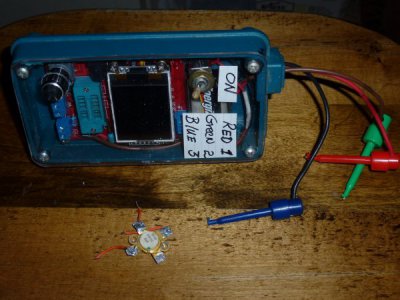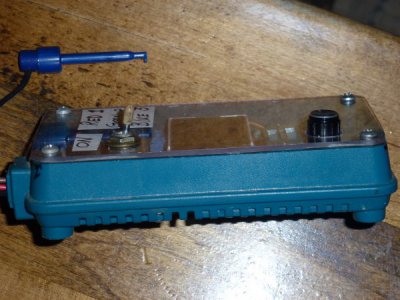- Joined
- Feb 13, 2017
- Messages
- 2,138
Yeah, I have a Series 6 and a Series 5. That's one reason I'm still alive.
For my limited knowledge the $25 scope has worked great. For several projects, including a metal detector and a driver for my mc 2100 treadmill controller board the scope has been a valuable tool.
But looking for a random glitch, I will always prefer a CRT scope. The retention of the phosphers will give enough time to see that "once in a while", random excursion from the norm.
These are really handy for anyone who builds electronic stuff or does repair and or testing of electronic parts.
You can order the kit on E-Bay for about 10 dollars more or less depending on which one you choose. You can
find the tester ready built or as a kit using a 328 IC chip. I built one kit a year ago and was so impressed I had to
get another.
Today's project was to mount the completed tester on an aluminum scrap plate and machine a holder for the
battery and switch. You can buy the tester by the board itself or with a clear plastic case for a few bucks more.
I opted to make my own as one had to always find a battery and hook it up before using it.
This unit will test a myriad of parts from transistors to resistors to diodes and capacitors. It will show the pin-out of
transistors and even tests for ESR(equivalent series resistance) on electrolytic capacitors which is VERY handy.
This kit takes a couple of hours to build but I must tell you that the parts are VERY small and require a magnifying
glass and a tiny soldering iron tip to accomplish it.
The screen identifies the part and gives many details to identify the part or test it..... totally amazing!View attachment 281744
This unit will identify transistors and indicate if NPN pr PNP if one is sorting out a bunch of unknown parts, very handy.
It also has a square wave output for which I have not had a need for yet. It is really handy for repairing switch mode
power supplies to test the electrolytic capacitors for ESR.
That's what I did today, so far...........................................


